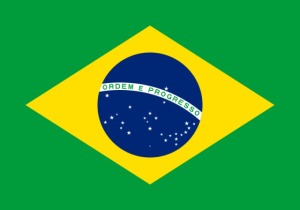by
Loren Bonner, DOTmed News Online Editor | February 26, 2013
Although Brazil is the largest market for medical equipment in South America — and it's only expected to grow due to the country's increased demand for high-quality health care — certain barriers have hindered U.S. medical imaging manufacturers from doing business there.
But this could all be changing, according to the Medical Imaging & Technology Alliance (MITA), an OEM lobby, which has been growing its international partnerships in Brazil for more than the past two years. During an official trip this past week, MITA members said Brazil’s industry representatives indicated their openness to help remove some of barriers to OEMs interested in doing business in Brazil.
"Brazil is a huge market opportunity, especially for imaging and radiation therapy manufacturers because it's highly advanced technology that Brazilian companies don't manufacture," Zach Helzer, MITA international director, told DOTmed News. "Health care is growing in leaps and bounds — there's been a huge increase in income in recent years which has led to more demand in quality care, growth in private insurance plans, and clinics and hospitals in-country who are looking to upgrade equipment."



Ad Statistics
Times Displayed: 173409
Times Visited: 3165 For those who need to move fast and expand clinical capabilities -- and would love new equipment -- the uCT 550 Advance offers a new fully configured 80-slice CT in up to 2 weeks with routine maintenance and parts and Software Upgrades for Life™ included.
Since 1999, the year Agência Nacional de Vigilância Sanitária (Anvisa), the equivalent of the FDA in Brazil, was created, there have been challenges with the registration process for U.S. OEMs. One issue MITA officials discussed during the meeting had to do with Good Manufacturing Practices, or GMP, which Brazil requires in advance of product registration.
"What this means is your facility has to be inspected by Anvisa and it has to get the certificate before you can go through the registration process for product clearance," said Helzer.
But Brazil only has 30 international inspectors for the thousands of devices and facilities it would need to inspect around the world. Other countries solve this problem by hiring third party companies to help do the inspection work, but not Brazil.
"At this time, if you don't have a GNP certificate, and you want your product cleared for market in Brazil, it will take about six years," said Helzer.
Another critical issue that came up during the meeting concerns CT equipment testing. Because Brazil requires CT equipment inspection to be tested by in-country test houses, OEMs currently have to build the equipment, disassemble it, get it to Brazil to be tested and then discard it.
"That's a timely and costly [process]," said Helzer. For small medical devices, it might not be as huge of an ordeal.
Brazilian officials indicated a willingness to look into exempting capital equipment from the rule, according to Helzer.
Other issues discussed during the meeting include the International Medical Device Regulators Forum (IMDRF), medical device single audit program (MDSAP), environmental regulations and the acceptance of ISO 13485, which would enhance Anvisa's inspection capability and increase transparency in the inspection process.

